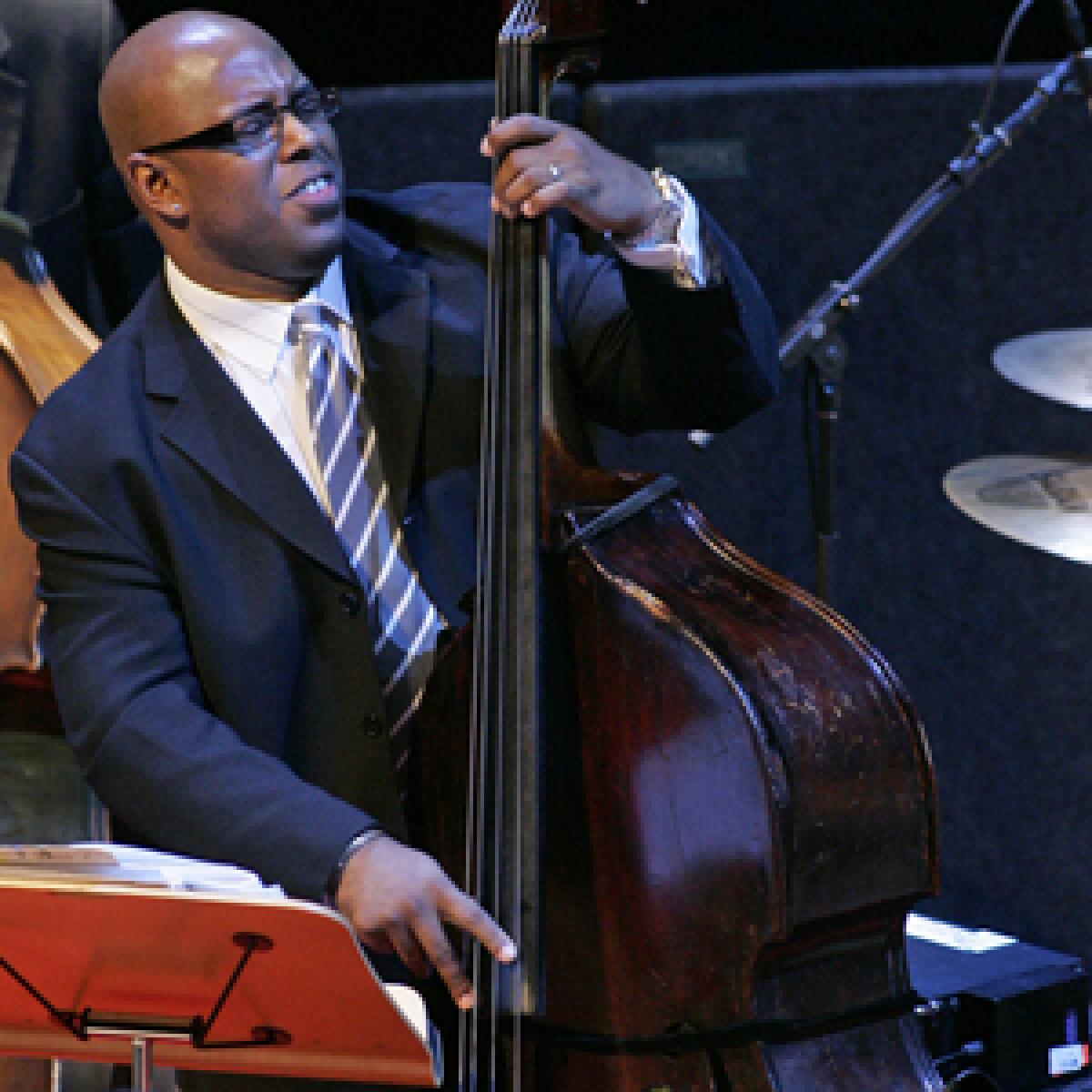Live: Christian McBride’s ‘The Movement Revisited’ at Disney Hall

- Share via
There was a remarkable atmosphere of synchronicity during the performance of Christian McBride’s “The Movement Revisited” at Walt Disney Concert Hall on Friday night. And maybe a trace of irony as well.
The four-section suite for big jazz band, small jazz group, gospel choir and narrators focused its segments on the words, the memory and the legacy of the Rev. Martin Luther King Jr., Rosa Parks, Malcolm X and Muhammad Ali. Performed at a time when the Democratic Party appears poised to choose Barack Obama as its presidential nominee, both the linkage to the civil rights movement of the ‘50s and ‘60s as well as the fact that it’s taken at least four decades since that era for the nomination of an African American to become a possibility were constant subtexts to the performance.
McBride -- who is both a world-class jazz bassist and the Los Angeles Philharmonic’s current creative chair for jazz -- was first commissioned to write “The Movement Revisited” 10 years ago by the Portland Arts Society as a two-part work for a small jazz group and a gospel choir. His first response, he explained in his prologue to the performance, was to say no: “I had no idea how to write for a choir, and I’d never written lyrics for anything.” But the society persisted, McBride’s composition skills matured, the concept expanded, the instrumentation grew larger, and it all came together in this constantly engaging presentation.
The connection between jazz and spoken word reaches back at least as far as the beatnik poetry and jazz performances of the 1950s. One could also make a case for the long historical presence of music -- most of it drawing upon the same roots that nourished jazz -- in African American churches.
McBride drew upon both those sources, sometimes applying the spontaneity of improvisation, sometimes unleashing the inspirational sounds of gospel voices, supporting it all with massed big band textures and a propulsive rhythm section (often driving the latter with his own big-toned, articulate bass playing). He shaped each of the movements -- “Sister Rosa (Rosa Parks),” “Brother Malcolm (Malcolm X),” “Rumble in the Jungle (Muhammad Ali)” and “A View From the Mountaintop (Dr. Martin Luther King, Jr.)” -- to musically characterize aspects of their subjects or their accomplishments.
Loretta Devine’s touching readings of the words of Rosa Parks were underscored by the spirited phrases of “Freedom!” sung by the St. James Sacred Nation Concert Choir. Adding to the energy, tenor saxophonist Ron Blake tossed in inspiring, between-phrase accents.
The Malcolm X segment, narrated by Carl Lumbly, also featured Blake. This time, however, McBride fashioned a dark, intense melody that immediately called up references to the probing, mid-’60s playing of John Coltrane. While there was no literal connection between the two, the subliminal association -- Coltrane’s passionate expansion of jazz horizons and Malcolm X’s similar insistence upon shifting the world’s view of racism -- was unavoidable.
Muhammad Ali’s often sardonically humorous comments were delivered with great élan by James Avery. And the “Rumble in the Jungle” -- a reference to the 1974 bout between Ali and George Foreman -- was paralleled by surging percussion and a spirited tenor saxophone battle between Blake and Rickey Woodard.
For the King segment, narrated in inspiring fashion by Wendell Pierce, the rhythm was driven by a marching band snare drum beat, played with inexorable, growing intensity by drummer Terreon Gully. As Pierce hit the high points of King’s classic “I Have a Dream,” McBride’s rich, big band ensemble textures drove the evening to its inevitable climax, concluding a work that was admirable -- to paraphrase King -- for both the content of its music and the character of its message.
More to Read
The biggest entertainment stories
Get our big stories about Hollywood, film, television, music, arts, culture and more right in your inbox as soon as they publish.
You may occasionally receive promotional content from the Los Angeles Times.










